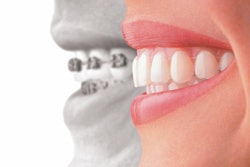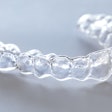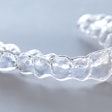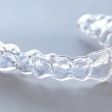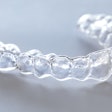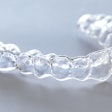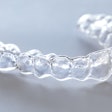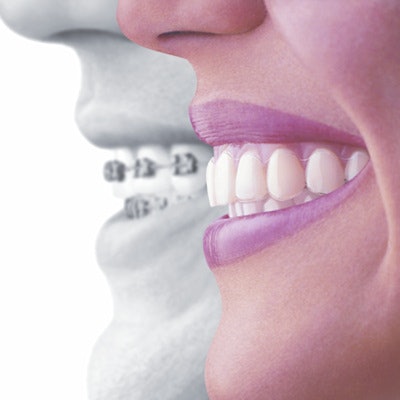
When you have to decide between clear aligners and traditional braces, which treatment option is best for your patients? Researchers reviewed multiple scientific studies to evaluate the pros and cons of both tooth movement techniques.
While clear aligners and braces effectively treated malocclusion, each treatment type had its own strengths and weaknesses. The researchers reported their findings in a systematic review published in BMC Oral Health (January 23, 2019).
"Clear aligners had [an] advantage in segmented movement of teeth and shortened treatment duration but were not as effective as braces in producing adequate occlusal contacts, controlling teeth torque, and retention," wrote the authors, led by Yunyan Ke and Yanfei Zhu.
Ke and Zhu are from the Shaoxing Hospital of Traditional Chinese Medicine in Shaoxing, China, and the department of oral and craniofacial science at Shanghai Ninth People's Hospital in Shanghai, respectively.
Different strengths and weaknesses
Previous systematic reviews have compared the effectiveness of clear aligners and fixed braces. However, with clear-aligner technology improving at such a rapid pace, the researchers thought it was important to update the scientific literature.
"As an increasing number of relevant studies published in recent years, a systematic review was needed to update the knowledge of the treatment effectiveness of clear aligners compared with braces," they wrote.
For their study, the researchers searched PubMed and other databases for clinical studies that evaluated the effectiveness of braces and clear aligners. They limited their search to studies involving permanent human teeth.
Their analysis ultimately included eight studies, most of which they determined to be moderate to high quality. The studies included randomized controlled trials and clinical comparative studies that investigated treatment effectiveness and efficiency.
Patients with clear aligners had better comfort, oral hygiene, and aesthetics than those with traditional braces, the researchers noted. They also had significantly faster treatment times than those with fixed appliances.
However, traditional braces were better than aligners at controlling precise tooth movements, including creating occlusal contacts and controlling posterior buccolingual inclination. Teeth treated with braces also saw significantly fewer cases of relapse, which could be associated with treatment times.
"Alveolar bone resorption required 7 to 14 days with equal time needed for periodontal tissue regeneration," the authors wrote. "So it could be postulated that the 2-week interval of clear aligners was too short for alveolar bone to repair and led to more relapse than the braces [which are] adjusted usually every 4 to 6 weeks."
Picking the best treatment
So which treatment is best for your patients? It depends, the authors noted. Clear aligners might be better for patients who need segmented tooth movement and want a short treatment time, while fixed braces could be better for patients who need precise occlusal contacts and an increased arch width.
The authors noted their findings should be interpreted with caution, however, because the studies in their review were all very different from each other and they could not account for potential confounding factors. Nevertheless, they hope their study provides insights into the strengths and weaknesses of each treatment type so dentists can pick the best option for each patient.
"Both clear aligners and braces were effective in treating malocclusion," they concluded. "Therefore, clinicians should consider the characteristics of these two orthodontic appliances when making a treatment decision."





